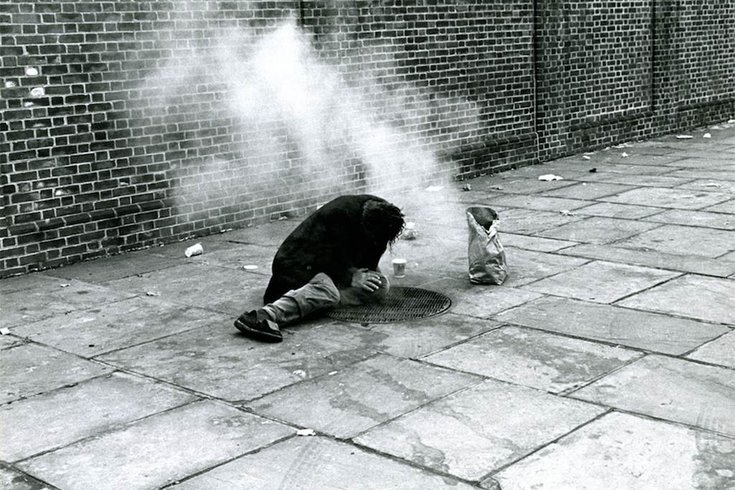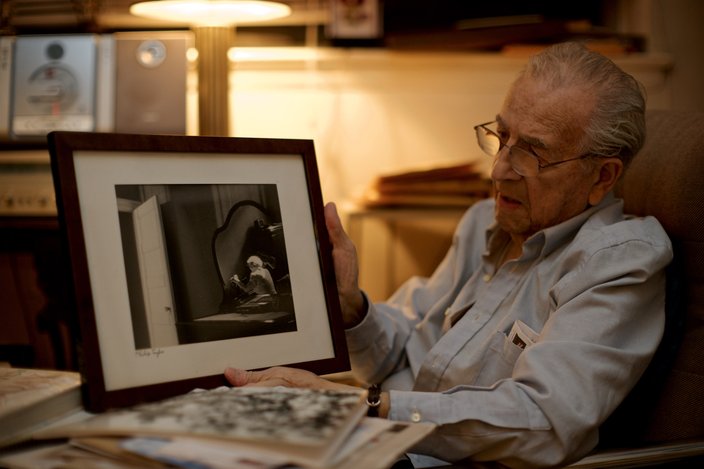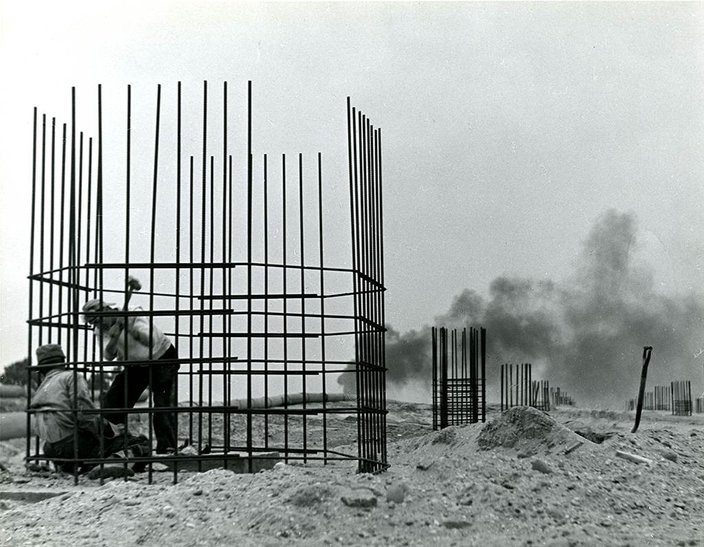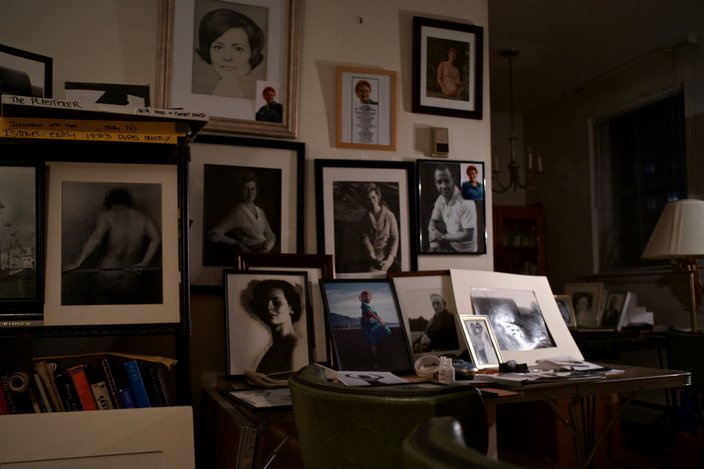
February 25, 2016
 Photo courtesy/Philip Taylor
Photo courtesy/Philip Taylor
Philip Taylor documented life on Skid Row in Philadelphia, which was centered on Vine Street between 6th and 12th streets.
Philadelphia photographer Philip Taylor has seen it all.
Born just off Two Street, he has seen things many have only read about in history books: the Great Depression, World War II, the Red Scare, the Cuban Revolution, the urban crisis, and the deindustrialization that robbed the city of the kinds of jobs that sustained him, and his photography, after the war.
The South Philadelphia of Taylor’s youth is a world apart from the city of today. The son of first-generation Ukrainian immigrants, his family was part of the thriving Jewish communities south of Washington Avenue and east of Broad Street, growing to 100,000 at their peak (and reduced to 500 by the 1980s).
A pall of smoke hung over his neighborhood, from the vast tracts of dumped and perpetually smoldering garbage heaped below Oregon Avenue. Later in life Taylor drove to the factory in Center City where he worked or down to the community known as Stonehouse Lane, below the trash pyres, where people lived in shacks disconnected from city sewer and water lines.
And where Taylor went, his camera came with him.
“When I look back I don’t know how I did so much,” says Taylor, 91, whose work will be displayed in Temple University’s Samuel L. Paley Library later this month in an exhibition called “Hand-Made Mirrors." Dozens of his photographs will be on display throughout the library, and available to the public through August.
Northeast Philadelphia photographer Philip Taylor, 91, shows an image he took of his mother.
Taylor taught himself how to develop his own photos after work and on weekends.
“I did all my own work, which was backbreaking," he recalled. "But I was very curious and I photographed a lot of stuff in South Philly that isn’t there anymore.”
Taylor’s parents arrived in America when they were very young. Both were forced to enter the industrial workforce in their early teen years. Taylor's childhood was tough too, but by his 13th birthday the family managed to settle in a house on East Moyamensing Avenue between Mifflin and McKean. It is that rare block of South Philly rowhomes that enjoys the shade of trees, open front porches, and an unusually wide street. The houses are still brick two stories, but for Taylor the location couldn’t be beat. He would live there, with short exceptions, for the next 40 years.
“The editor I took it to at the Inquirer told me it was Communist propaganda, the sonofabitch. I couldn’t believe it. Colliers Magazine. Look Magazine. Nobody wanted to touch it." – Philip Taylor, of his photography documenting tuberculosis in the city's Tenderloin district
World War II occasioned Taylor’s longest time away from Moyamensing Avenue. Although he could have avoided service as the oldest male in the family — his father had died young — and primary breadwinner, Taylor wanted to defend his left-wing ideals and Jewish identity against Nazism. He was eventually denied active service due to a medical condition, but he served as a military policeman in Texas and guarded members of the Wehrmacht’s Afrika Korps. (“They were big tall guys, highly ideological and very indoctrinated,” he remembers. “Very nasty guys.”)
When Taylor returned to Philly, he spurned the chance to take advantage of the GI Bill and attend college. Like many returning veterans, he assumed that skilled manufacturing work would be around forever.
“Having grown up in the Depression I figured a very good trade would be more steady,” remembers Taylor. “Living in tough times colors your thinking and your life. I wanted something that was substantial, so I apprenticed in the lithographic union. If you had a good union it was a reasonably good wage. You couldn’t get rich on it but it was a little over the average.”
Laborers perform early work during the construction of the Walt Whitman Bridge in South Philadelphia in the mid-1950s.
Taylor began taking his camera with him everywhere, from the deepest recesses of Philadelphia to Havana, where he vacationed just before and just after the Cuban Revolution. Much of his early work takes in mid-century South Philadelphia, snapped while he roamed around the old neighborhood. (Think old men playing bocce in the park.)
Taylor also worked on specific projects, like photographing the construction of the Walt Whitman Bridge in the mid-1950s. He also documented life on Stonehouse Lane, a fiercely independent community that lived on the marshland where the new bridge would be built.
“He’s captured Philadelphia life. We try to document the urban experience in the region and these photos do a wonderful job of doing that. It’s beautiful and fits really well into our collection.” – Margery Sly, director, Temple’s Special Collections Research Center
“There was no road there, you had to go through the burning dumps,” recalls Taylor. “They had running open sewers and cows back there. It was amazing and very primitive.” Living in makeshift cabins outfitted with jerry-rigged electricity, the locals told Taylor that their community dated back to the Revolutionary War.
During the same period, a team of Quakers enlisted Taylor’s help to track incidences of tuberculosis in the homeless population that was centered in the Tenderloin area. This now-forgotten neighborhood was once the center of a rowdy entertainment district, but by the 1950s it had atrophied into a skid row of wretched bars and cheap boarding houses — along with the nucleus of today’s Chinatown.
Among the alcoholics and mentally ill in the Tenderloin, Taylor and his Quaker partners found a rate of tuberculosis many times greater than the general population. They couldn’t find anyone to report the story, however.
“This was the belly of the beast, but it was the Eisenhower years and no one was interested,” says Taylor, whose photos of the derelict men and their dingy haunts documented their findings. (A few of them will be displayed at his Temple show).
“The editor I took it to at the Inquirer told me it was Communist propaganda, the sonofabitch," he said. "I couldn’t believe it. Colliers Magazine. Look Magazine. Nobody wanted to touch it. I met personally with the science editor of the Saturday Evening Post. He said, ‘we’re a family magazine, what’s in it for the family?’”
Tubercular vagrants weren’t the only subjects to catch Taylor’s interest. The photos at Paley Library span his life, from the postwar years through the 1990s, and document a city in flux.
“He’s captured Philadelphia life,” says Margery Sly, director of Temple’s Special Collections Research Center, which will house Taylor’s work after the show is over. “We try to document the urban experience in the region and these photos do a wonderful job of doing that. It’s beautiful and fits really well into our collection.”
Photos decorate one of the walls in Philip Taylor's one-bedroom, Northeast Philadelphia apartment. Dozens of his historical photographs will be on display at Temple University.
He enjoyed vacationing in Cuba, although the regime of conservative dictator Fulgencio Batista made him uncomfortable. He vividly recalls, in fact, witnessing young men being grabbed from the street and stuffed into police cars for nothing more than loitering. Taylor managed to return there and snap photos just after the tyrant’s overthrow by Fidel Castro, in the brief window when travel was still feasible between Cuba and America.
Despite all the worldly experience, Taylor never really tried to become a professional photographer, although in the 1960s he got an interview with a receptive photography editor at Life Magazine. But Taylor grew increasingly flustered at the prospect of a follow-up interview and decided to stick with his job in Philadelphia. He did not return to the magazine’s Manhattan offices.
All this time, Taylor maintained a full-time job with Mid-City Press at 9th and Spruce before it moved to larger space at 24th and Locust. At its peak, Mid-City Press employed a few dozen typesetters, platemakers, and bookbinders. In the late 1980s, near the end of Taylor’s career, the company moved out to an office park in Bucks County and he moved to Northeast Philadelphia to shorten his commute. Back then, Castor Gardens was still a predominantly Jewish community of many South Philly expats. But that soon changed, and today the neighborhood is one of the most ethnically diverse in the city.
“That’s life, everything changes,” says Taylor. “Where I grew up in South Philly, now there’s Buddhist temples. It’s amazing.”
Today, Stonehouse Lane is paved over, Chinatown has subsumed the Tenderloin neighborhood, Mid-City press is long closed, the union label that Taylor swore by is almost extinct. And Fidel Castro himself has been deposed by old age.
Taylor, however, a few years older than the Cuban revolutionary, is still taking pictures.
 Bastiaan Slabbers/For PhillyVoice
Bastiaan Slabbers/For PhillyVoice Photo courtesy/Philip Taylor
Photo courtesy/Philip Taylor Bastiaan Slabbers/for PhillyVoice
Bastiaan Slabbers/for PhillyVoice